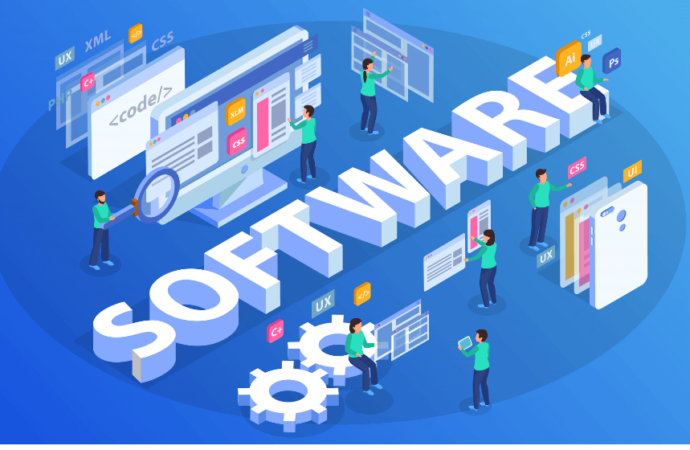In the fast-paced and technology-driven world of business, software has emerged as a fundamental pillar, driving innovation, efficiency, and productivity across industries. From small startups to multinational corporations, businesses rely on software solutions to streamline operations, automate processes, and gain a competitive edge. In this article, we explore the significance of software in the business
In the fast-paced and technology-driven world of business, software has emerged as a fundamental pillar, driving innovation, efficiency, and productivity across industries. From small startups to multinational corporations, businesses rely on software solutions to streamline operations, automate processes, and gain a competitive edge. In this article, we explore the significance of software in the business landscape, its evolution over time, and the transformative impact it continues to have on organizations worldwide.
Understanding Software:
In simple terms, software refers to a collection of programs, data, and instructions that enable computers and electronic devices to perform specific tasks or functions. It is intangible, existing as lines of code and algorithms, yet its influence is palpable in almost every aspect of modern life. Software can range from basic applications like word processors and spreadsheets to sophisticated artificial intelligence (AI) systems and virtual reality experiences.
The Evolution of Software:
The history of software dates back to the early days of computing in the mid-20th century. Early computers were programmed using punch cards and switches, requiring substantial effort and technical expertise. As technology advanced, programming languages like Fortran, COBOL, and C emerged, making software development more accessible and efficient.
The breakthrough came with the invention of the graphical user interface (GUI) in the 1970s, which allowed users to interact with computers using visual elements like icons and windows. This innovation democratized computing, bringing it to the masses and paving the way for the rise of personal computers.
The advent of the internet in the 1990s ushered in a new era of software development and distribution. Web-based applications and cloud computing became prominent, enabling businesses to access software and services remotely, eliminating the need for complex on-site installations.
Today, software has evolved into a vast ecosystem, encompassing a wide array of categories, including:
- Enterprise Software: Large-scale applications designed to support the core functions of businesses, such as Enterprise Resource Planning (ERP) systems, Customer Relationship Management (CRM) software, and Supply Chain Management (SCM) solutions.
- Productivity Software: Tools that enhance efficiency and collaboration, including word processors, spreadsheets, project management platforms, and communication applications.
- Industry-Specific Software: Tailored solutions catering to specific industries, such as healthcare, finance, manufacturing, and retail, to address unique challenges and requirements.
- Mobile Apps: Software applications optimized for use on smartphones and tablets, serving a variety of purposes from entertainment to business operations.
- Artificial Intelligence and Machine Learning: Software that mimics human intelligence, enabling machines to learn, reason, and make decisions, leading to advancements in automation and data analysis.
- Software as a Service (SaaS): Cloud-based software delivery model where applications are hosted and maintained by vendors, offering businesses scalability, flexibility, and cost-effectiveness.
Impact on Business:
The proliferation of software has revolutionized the way businesses operate, bringing about numerous benefits, including:
- Increased Efficiency: Software automates repetitive tasks, reducing human error and speeding up processes, ultimately improving overall efficiency and productivity.
- Data-Driven Decision Making: Advanced analytics software allows businesses to collect and analyze vast amounts of data, enabling data-driven decision-making for better insights and strategic planning.
- Enhanced Customer Experience: Software solutions facilitate seamless customer interactions, from online shopping experiences to personalized customer support through chatbots.
- Global Connectivity: Through software applications, businesses can connect with customers, partners, and employees worldwide, fostering global collaboration and market reach.
- Agility and Adaptability: Cloud-based software empowers businesses to scale up or down quickly, accommodating changing demands and market conditions.
- Innovation and Competitive Edge: Embracing cutting-edge software solutions allows businesses to stay ahead of the competition, delivering innovative products and services to meet evolving customer needs.
Challenges and Considerations:
While software brings numerous advantages, businesses also face challenges related to security, data privacy, and software integration. Cybersecurity threats pose significant risks, necessitating robust security measures to protect sensitive information and intellectual property.
Furthermore, as software becomes more complex and interconnected, ensuring seamless integration between different systems and applications is critical to avoid compatibility issues and data silos.
Conclusion:
In the dynamic world of business, software has become an indispensable asset, enabling organizations to navigate the complexities of the modern landscape with greater efficiency, innovation, and adaptability. As technology continues to evolve, businesses must stay agile and embrace emerging software solutions to remain competitive and meet the ever-changing demands of the market. With software driving progress and transformation, the future of business holds tremendous potential for those who harness the power of cutting-edge technologies to unlock new opportunities and drive success.


















